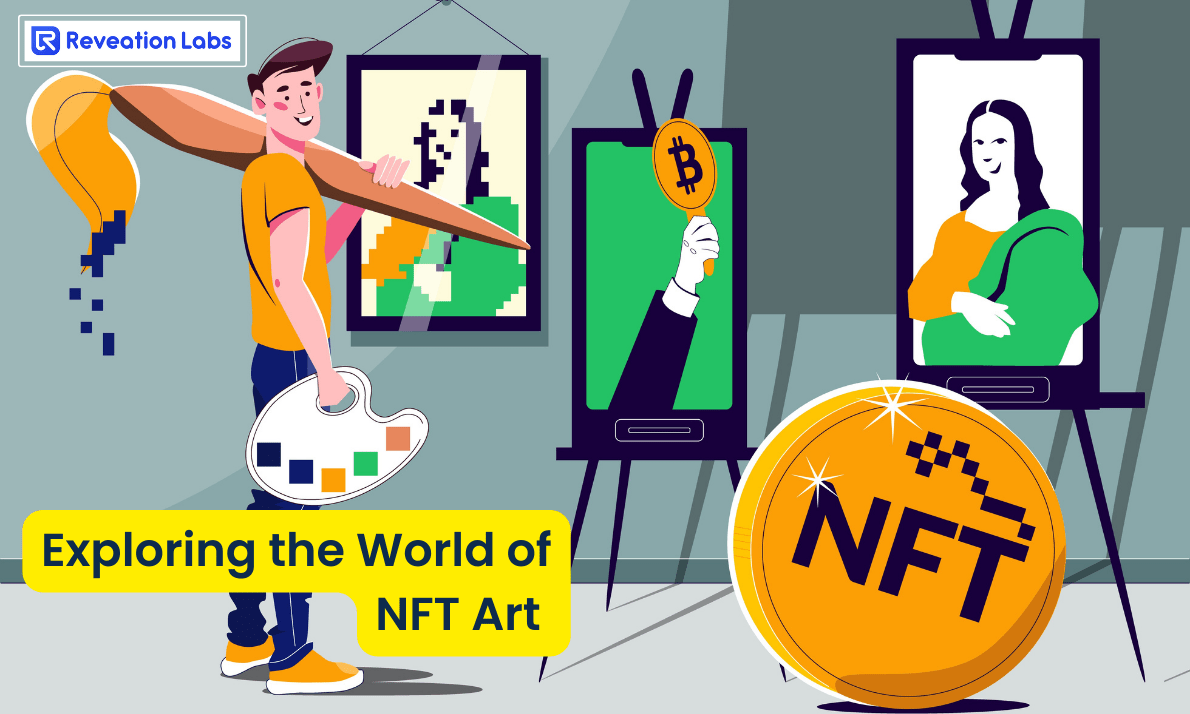Exploring the World of NFT Art

Introduction
NFTs, or non-fungible tokens, have taken the world by storm over the last year, with NFT art being one of the most prominent and discussed areas of this emerging technology. NFT art has opened up new possibilities for artists to monetize their digital creations and for collectors to own unique, one-of-a-kind pieces of art that cannot be replicated. In this blog post, we'll explore NFT art, why it has become so popular, and what the future holds for this exciting new field.
What is NFT Art Meaning?
NFT art is a type of digital art that is unique, scarce, and verifiable through blockchain technology. An NFT is essentially a digital asset represented by a unique token on an NFT blockchain, a decentralized ledger that records transactions. Unlike other digital assets, NFTs are not interchangeable, meaning each NFT is unique and cannot be replicated or exchanged for another NFT. This makes NFTs ideal for representing digital art, as it ensures that each piece is one-of-a-kind and cannot be duplicated.
NFT art can take many forms, including digital images, animations, videos, and music. The key feature of NFT art is that it is owned by a single person who holds the tokenization representing that piece of art. This means that NFT art can be bought and sold just like traditional art, with collectors bidding on pieces and owning them outright.
Why has NFT Art become so popular?
NFT (Non-Fungible Token) art has become popular for several reasons:
1. Unique Ownership:
NFTs are digital tokens that represent ownership of a unique digital asset. This means that buyers of NFT art can claim to own a one-of-a-kind piece of art that cannot be replicated or duplicated. This uniqueness has attracted collectors who want to own something that is exclusive.
2. Cryptocurrency boom:
NFTs are often purchased using cryptocurrency, and the recent surge in the value of crypto art has made it easier for people to invest in NFTs. This has increased interest in NFT art as a potential investment opportunity.
3. Accessibility:
NFT art is accessible to a wider audience because it can be easily bought and sold online. This has created a market for emerging artists without access to traditional art market disruption.
4. Social Media:
Social media platforms have played a significant role in the rise of NFT art. Artists can showcase their work and build a following on social media, leading to increased interest and demand for their NFT art.
Tips to promote NFT collections
1. Build a Strong Community:
Engage with potential buyers and investors through social media channels, online forums, and other online platforms. This helps you build a community around your NFT collection, which can drive more interest and investment.
2. Create Quality Content:
High-quality content can help showcase your NFT collection and attract potential buyers. This can include promotional videos, images, and descriptions that highlight the unique features and benefits of your NFTs.
3. Partner with Influencers:
Partnering with influencers in your niche can help you reach a wider audience and attract more potential buyers. Reach out to influencers with a strong following and interest in the same niche as your NFT collection.
4. Host Events:
Host virtual or in-person events that showcase your NFT collection. This can include online auctions, webinars, or live meetups. This helps create a buzz around your collection and allows potential buyers to see your NFTs in action.
5. Optimize Your Website:
Optimize your website for search engines and user experience to make it easier for potential buyers to find and purchase your NFTs. Ensure that your website is easy to navigate, visually appealing, and provides detailed information about your NFT collection.
NFT Art in the Future
NFT art has gained immense popularity in recent years and is likely to impact the future of art significantly. As more people become aware of NFT art and its potential, we can expect a significant increase in adoption. This could lead to more artists embracing the medium and creating unique digital artwork.
With more mainstream acceptance, NFT art could potentially become as popular as traditional art forms, leading to a shift in the art world's overall paradigm. It could also increase recognition and appreciation for digital artists and their work. With technological advancements, NFT art could become even more immersive and interactive, offering viewers an even more engaging and compelling experience.
Conclusion
Currently, you at least have a rough idea of how to market your NFT artwork. The most successful NFT initiatives have a strong channel presence, widespread support, and clear road maps. Because investors are aware of the producers' intense passion, it promotes confidence and increases value. You must follow suit. Combining a few of these tactics will surely be effective. Even better, you could create your NFT for nothing at all and devote time to marketing it through free organic channels.
Comments
Post a Comment